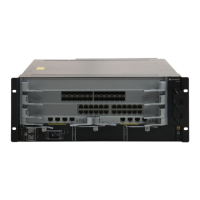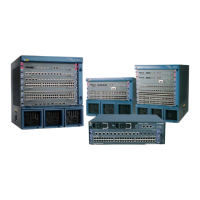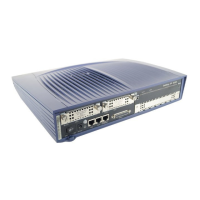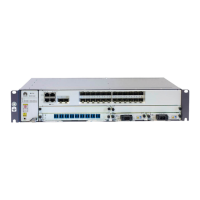as the root bridge, and the network topology is illegitimately changed, triggering spanning tree
recalculation. This also may cause the traffic that should be transmitted over high-speed links
to be transmitted over low-speed links, leading to network congestion. The root protection
function on a switching device is used to protect the root bridge by preserving the role of the
designated port.
NOTE
Root protection is configured on a designated port. It takes effect only when being configured on the port
that functions as a designated port on all MSTIs. If root protection is configured on other types of ports, it
does not take effect.
Do as follows on a root bridge in an MST region:
Procedure
Step 1 Run:
system-view
The system view is displayed.
Step 2 Run:
interface interface-type interface-number
The Ethernet interface view is displayed.
Step 3 (Optional) Run:
stp binding process process-id
The port is bound to an MSTP process.
NOTE
This step is performed only when the interface needs to be bound to an MSTP process with a non-zero ID.
If the interface belongs to process 0, skip this step.
Step 4 Run:
stp root-protection
Root protection is configured on the switching device.
By default, root protection is disabled.
----End
9.5.5 Configuring Loop Protection on an Interface
The loop protection function suppresses the loops caused by link congestion.
Context
On a network running MSTP, a switching device maintains the root port status and status of
blocked ports by receiving BPDUs from an upstream switching device. If the switching device
cannot receive BPDUs from the upstream because of link congestion or unidirectional-link
failure, the switching device re-selects a root port. The original root port becomes a designated
port and the original blocked ports change to the Forwarding state. This may cause network
loops. To address such a problem, configure loop protection.
After loop protection is configured, if the root port or alternate port does not receive BPDUs
from the upstream switching device, the root port is blocked and the switching device notifies
Quidway S7700 Smart Routing Switch
Configuration Guide - Ethernet 9 MSTP Configuration
Issue 01 (2011-07-15) Huawei Proprietary and Confidential
Copyright © Huawei Technologies Co., Ltd.
452

